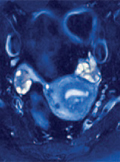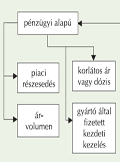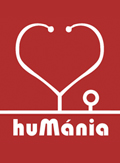The eLitMed.hu medical portal uses computer cookies for convenient operation. Detailed information can be found in the Cookie-policy.
Lege Artis Medicinae - 2010;20(03-04)
Content
[Neuroendocrine background of atherosclerosis and cardiovascular damages in durable stress]
[Chronic stress is associated with increased levels of cortisol and catecholamines as well as with an enhanced activity of the sympathico-sensory nervous system. These neuroendocrine events influence both directly and indirectly the lipid and glucose metabolism as well as inflammatory immune reactions. Stress effects directly cause vascular damage and atherosclerosis via the renin-angiotensin system (RAS). Besides RAS, activities of monocytes/macrophages and the sympathico-sensory nervous system lead to local cardiovascular inflammation and cell hypertrophy. Transactivation between G-protein coupled adrenoceptors and tyrosine kinase receptors as well as the switching between β1- and β2- adrenergic receptors play an important role in the development of cardiac hypertrophy and heart failure. In all chronic neuroendocrine diseases that are associated with increased activity of the sympathetic nervous system, the development of cardiovascular damages needs to be considered.]
[Fungal infections of the lung]
[During the past years the frequency of pulmonary mycoses has increased; the most serious cases include Candida- and Aspergillus-infections. In this article, we discuss primarily the clinical manifestations of these infections, but we also mention the Pneumocystis jiroveci, Cryptococcus neoformans and Zygomycosis/ Mucormycosis infections. We describe the role of the chest physician in the diagnostic procedure and position the bronchoscopic examinations in the diagnostic algorythm.]
[Several questions of medical treatments in polycystic ovary syndrome]
[Polycystic ovary syndrome is an endemic disease, thus its treatment is of great importance. In polycystic ovary syndrome, metformin decreases androgen levels, improves menstrual irregularity, hirsutism, ovulation ratio, and the efficiency of lifestyle interventions on visceral obesity, endothelial function and LDL-cholesterol level. It seems plausible to suppose that metformin decreases the incidence of diabetes in this group of patients. Metformin is superior to oral contraceptives/antiandrogens in respect of its effect on triglyceride level and insulin sensitivity, however, it is less effective in decreasing androgen levels, normalisation of the menstrual cycle and supposedly in the prevention of endometrial cancer. Metformin therapy improves fertility, however, when infertility is the main problem, it is not indicated as the primary treatment. In this case, ovulation induction, ovary drilling, as well as in vitro fertilization are warranted that can be supported by metformin therapy is some cases.]
[A new era in the treatment of patients with type 2 diabetes - Significance of the incretin analogue liraglutide from an internist’s perspective]
[Therapy of patients with type-2 diabetes has two important features: in addition to the nonpharmacological approach (changes in lifestyle and diet, smoking cessation, physical exercise), pharmacological intervention is needed to reach the target level of blood sugar, and those of other cardiometabolic risk factors (blood pressure, body weight, lipids, uric acid). Unfortunately, it is a worldwide problem that only a small fraction of diabetic patients reach all these goals. This is why it is very important to have drugs which can not only decrease the blood sugar level, but have beneficial effect on several cardiometabolic factors. Antidiabetic drugs affecting incretin system, the GLP-1 analogues or -mimetics, and DPP-4 inhibitors open a new era in the treatment of diabetic patients, because in addition to the reduction of blood glucose level, they may have beneficial effects on blood pressure, blood lipids and body weight. Among these drugs the newly registered liraglutide has an important role, because it stimulates secretion of insulin in a glucose-independent manner, and it also reduces the secretion of glucagon which is a well known endogenous substance that increases blood glucose level. It is important to note that liraglutide decreases appetite, body weight and blood pressure of diabetic patients. Several clinical pharmacological studies has been completed with liraglutide. Of these the LEAD (Liraglutide Effect and Action in Diabetes) program is of outstanding value because it proved that either in monotherapy or in combination with other antidiabetics it effectively decreased blood sugar level, body weight, and had a beneficial effect on systolic blood pressure.]
[The safety of rosiglitazone - Lessons from the RECORD study]
[The international RECORD study team evaluated the safety of the oral antidiabetic drug rosiglitazone, after contradictory reports of its unfavourable cardiovascular adverse effects, in combination with sulfonyureas and metformin. The drug didn’t increase cardiovascular morbidity and overall mortality compared with standard blood sugar lowering drugs. However, it increased the risk of heart failure, and, in women, the risk of limb fractures. Keeping in mind the strict contraindications, the drug can still be prescribed, as glitazones have effective blood sugar lowering and insulin-sensitizing effects.]
[Nebivolol: the long-acting, vasodilatator beta-blocker]
[Nebivolol is a third-generation, long-acting, vasodilator beta-adrenoceptor-blocker with very high selectivity to beta-1 receptor. In addition to its efficient blood pressure lowering effect, results of previous trials have shown that nebivolol, which has a vasodilator effect and improves endothelial dysfunction, offers a safe, well-tolerable therapeutic option for elderly patients with heart failure, chronic pulmonary disease, diabetes, hyperlipidaemia and hypertension. It does not affect or improves lipid and carbohydrate metabolism, moreover, it can improve patients’ quality of life in multiple ways.]
[Examination of the parameters affecting restenosis using coronary stents]
[Treatment of coronary artery stenoses has substantially changed; previous cardiac surgery methods have been replaced by percutaneous coronary interventions, especially coronary stent implantations. Nevertheless, stenonis can reoccur in the artery following stent implantation; this process is called in-stent restenosis. In the present study, we examined the technical characteristics of coronary stents that, if selected optimally, can reduce the frequency of in-stent restenoses. These characteristics include the technology used for the manufacturing of the stent, the stent’s structure, the area of its metal-covered surface, its strut profile and coating. In our study, we examined strut width and profile of ten coronary stents (AVE GFX, Express, Liberté, Multi-Link Zeta, Orbus R, Pro-Kinetic, Sanocor, Tecnic Carbostent, Tentaur, Tentaur-C). We measured strut’s width using an Olympus PMG3 metallurgical microscope, and studied changes of the Sanocor Stent’s strut thickness during the manufacturing process. Our results showed that the Sanocor Stent’s strut thickness was reduced during the manufacturing process.]
[The role of risk sharing in drug funding]
[In order to make the pharmaceutical budget predictable, an internationally accepted approach of health insurance providers is to shift more and more financial risks to pharmaceutical companies. The major paradox of financial risk-sharing schemes is that increased mortality, poor therapeutic compliance, reduced access to healthcare services, decreasing quality of health care and lack of treatment reduce pharmaceutical spending. Consequently, payers have started to employ reimbursement schemes that enable them to guarantee health gain and quality of service. Introduction of a risk-sharing scheme based on outcome and compliance can be a major advancement in the strategy of the Hungarian National Health Insurance Fund (NHIF). Funding schemes that guarantee therapeutic benefit can help reduce the uncertainty in coverage decisions regarding high-value, innovative healthcare technologies. However, justification of the parallel use of financial and outcomebased risk-sharing on the micro level is questionable. Even if the primary objective of the NHIF is to ensure the sustainbility of the public pharmaceutical budget, financial risks should be managed on the macro level.]
[Secondary hyperaldosteronism resulting from a feeding disorder]
[INTRODUCTION - A number of diseases can cause hyperreninaemia and secondary hyperaldosteronism due to the stimulation of the renin-angiotensin system (RAS). The authors present a case of a patient suffering from a feeding disorder, whose secondary hyperaldosteronism verified by hormone examinations recovered after resolution of the feeding disorder. CASE REPORT - The authors found that the patient, who had been on an extreme vegetarian diet and avioded all forms of common salt as well as natural sodium intake for 8 years, had consistently normal electrolite levels, normal blood pressure, elevated plasma renin activity (PRA) and plasma aldosterone levels. Salt loading and postural tests verified secondary hyperaldosteronism. All known diseases that might lead to elevated RAS activity were excluded. After cessation of the salt-restricted diet, the patient’s PRA and plasma aldosteron levels returned to the normal range, which confirmed the possibility that the secondary hyperaldosteronism developed because of the feeding disorder. CONCLUSION - The authors have not found similar hormon alterations due to alimentary causes in humans in the literature. According to their hypothesis, the feeding disorder might lead to secondary hyperaldosteronism via affecting the system or systems that regulate RAS activity.]
1.
Clinical Neuroscience
Is there any difference in mortality rates of atrial fibrillation detected before or after ischemic stroke?2.
Clinical Neuroscience
Factors influencing the level of stigma in Parkinson’s disease in western Turkey3.
Clinical Neuroscience
Neuropathic pain and mood disorders in earthquake survivors with peripheral nerve injuries4.
Journal of Nursing Theory and Practice
[Correlations of Sarcopenia, Frailty, Falls and Social Isolation – A Literature Review in the Light of Swedish Statistics]5.
Clinical Neuroscience
[Comparison of pain intensity measurements among patients with low-back pain]1.
Clinical Neuroscience Proceedings
[A Magyar Stroke Társaság XVIII. Kongresszusa és a Magyar Neuroszonológiai Társaság XV. Konferenciája. Absztraktfüzet]2.
3.
Journal of Nursing Theory and Practice
[A selection of the entries submitted to the literary contest "Honorable mission: the joys and challenges of our profession" ]4.
Journal of Nursing Theory and Practice
[End of Life and Palliative Care of Newborns in the Nursing Context]5.
Journal of Nursing Theory and Practice
[Aspects of Occupational Health Nursing for Incurable Patients ]

























